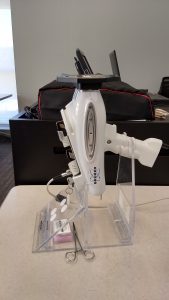Science and Humanities. At first glance, these subjects seem to be unrelated and located on opposite ends of the academic spectrum. I initially believed this too but when I got into the color unit, I realized that this wasn’t true at all. It turns out that science and humanities actually make a good team!
Before, we delve deeply into this subject, let’s first define what science and the humanities are. According to dictionary.com, science is the “systematic knowledge of the physical or material world gained through observation and experimentation.” [1] Humanities, interestingly, has four definitions [2]:
- 1. “the study of classical languages and classical literature.”
- 2. “the Latin and Greek classics as a field of study.”
- 3. “literature, philosophy, art, etc., as distinguished from the natural sciences.”
- 4. “the study of literature, philosophy, art, etc.”

Ever since this unit started, I have been gradually recognizing a significant link between these two subjects. Our class is currently working with Dr. Alice Hunt, an archeological materials scientist at UGA who specializes in working with the portable X-ray fluorescence (pXRF) device [3]. With the pXRF, our class is analyzing medieval manuscript fragments, specifically focusing on color pigments. We hope, by being able to identify specific pigments from the manuscripts, we can infer any meaningful historical and anthropological implications. For example, if we find smalt [4] (a potassium glass containing cobalt that was used in the Netherlands since the 16th century) on one of our manuscripts, we can infer that the manuscript originated around the late Middle Ages. Moreover, since Netherlands was the primary source of smalt, we can at least deduce a trade between this Dutch nation and the country the manuscript came from. Therefore, we can see here how science first provides us with a clue by identifying a specific pigment. Then, the humanities field builds onto this finding by coming up with some historical implications.

This is just remarkable because it shows that science and the humanities are not so different from each other. While they may differ in the way they compile and synthesize information, they are both devoted to the same cause: understanding and improving the lives of humanity. It’s like they are Batman and Robin who each bring their own unique powers but become invincible and stronger when they work together to protect the citizens of Gotham. This collaboration is especially important and relevant to our lives today because of the ongoing concern that humanities majors are more disadvantaged than science majors in the the job market.
I think it’s very possible that the future job market will be difficult for both science and humanities majors. Recently, I attended an event on the Fourth Industrial Revolution which is basically a theory on how technological advances will combine the digital, physical, and biological worlds together, drastically impacting all disciplines and the job market (Klaus Schwab, “The Fourth Industrial Revolution”) [5]. This means that many jobs will become replaced by automated substitutes. As a result, this will create an inequality between low-skill and high-skill individuals. Advancing technology is a threat to science and humanities majors because it is replacing some people’s jobs and prioritizing subjects such as nanotechnology and artificial intelligence over medicine and literature. Take note of President Trump’s proposed budget for 2018. He has proposed to cut funds for the National Institutes of Health (an agency dedicated to biomedical research), the National Endowment for the Arts, and the National Endowment for the Humanities. [6] This raises a concern for college students because a significant number of them are either studying humanities or biological sciences. I, myself, am an English major and have many friends that are studying biology, so this is just scary.
However, do not fear! The pXRF analysis of medieval manuscripts shows us that science and the humanities can work together to come up with ideas that are beyond what a self-automated machine can do. It brings indisputable scientific evidence and social history together.
Therefore, it is important for us to understand that science and the humanities are not distinct entities but rather complementary subjects that rely on each other. Their interdependent relationship not only helps us to understand the world in a more comprehensive and inclusive way but also gives us hope that the job market is in need of both science and humanities majors. So it is up to us, college students and future generations, to embrace this idea and demand jobs that encompass both fields.
-Michelle Chang
Sources:
[1] “Science.” Dictionary.com Unabridged. Random House, Inc. 5 Nov. 2017. < http://www.dictionary.com/browse/science?s=t>.
[2] “Humanities.” Dictionary.com Unabridged. Random House, Inc. 5 Nov. 2017. < http://www.dictionary.com/browse/humanities?s=t>.
[3] Camp, Cynthia. “Elemental, My Dear Watson: Researching the Chemical Composition of Medieval Pigments.” Hargrett Hours Project. WordPress. 8 Nov. 2017. <https://ctlsites.uga.edu/hargretthoursproject/elemental-my-dear-watson-researching-the-chemical-composition-of-medieval-pigments/>.
[4] “Smalt.” Illuminated Manuscripts in the Making. The Fitzwilliam Museum. 8 Nov. 2017. <http://www.fitzmuseum.cam.ac.uk/illuminated/lab/overview-of-artists-materials/smalt/type/material>.
[5] Schwab, Klaus. “The Fourth Industrial Revolution. World Economic Forum. World Economic Forum. 5 Nov. 2017. <https://www.weforum.org/about/the-fourth-industrial-revolution-by-klaus-schwab>.